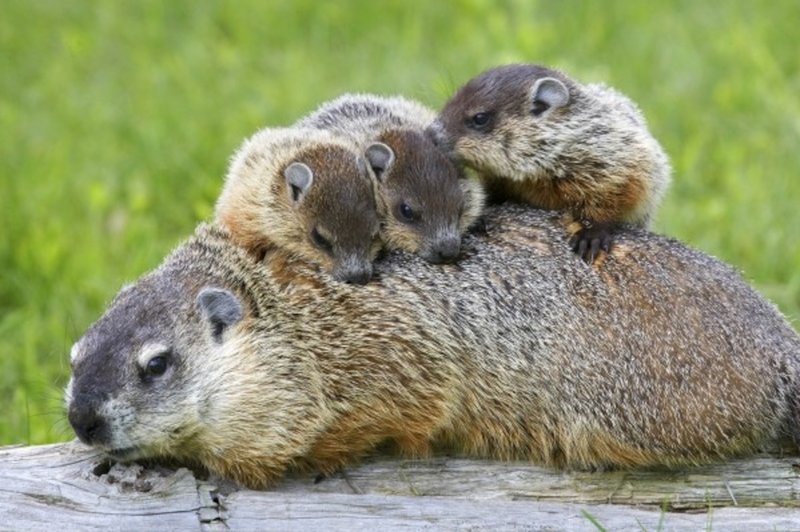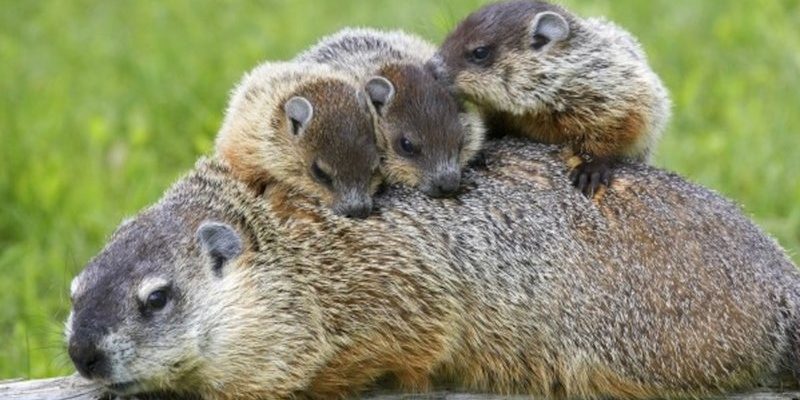
Imagine a small, bustling community deep within a burrow system. Groundhogs dig intricate tunnels and chambers where they create cozy homes for their families. Just like you might want to decorate a nursery or make a safe space for a baby, groundhogs take special care to prepare for their little ones. In this article, we’ll dive deep into how groundhogs nurture their young, explore their behaviors, and share some heartwarming moments along the way.
Creating a Safe Nest for Newborns
Before the young groundhogs even make their entrance into the world, their mother puts in a lot of work. In late winter or early spring, around February to March, a pregnant groundhog will start digging a nest chamber within her burrow. This cozy nook is often lined with soft materials like grass and fur to keep the babies comfortable.
Here’s the thing: groundhogs typically give birth to a litter of two to six pups. The nesting chamber is crucial because it provides shelter from predators and the harsh elements. Groundhogs are not the biggest animals around, so finding a safe spot is vital for the survival of their tiny, vulnerable young. It’s like setting up a special safe zone where the mother can keep an eye on her brood while they grow.
The mother groundhog is very protective during this time. Once the pups are born, she’ll stay with them in the burrow, keeping them warm and secure. You might be wondering how she manages this while also needing to eat. Well, she doesn’t eat much at first and relies on her stored fat from the previous summer to sustain her during this critical period.
The Life of Young Groundhogs
After about a month, the cute little pups start to open their eyes and grow fur. It’s a big milestone! At this stage, they’re still entirely dependent on their mother for food. The mother continues to nurse them, which is essential for their early development. You can think of it as a really, really close bonding experience.
When the pups are around six weeks old, they’ll begin to venture outside the burrow for the first time. Imagine the excitement! They start to explore the world around them—sniffing grass, feeling the sun on their fur, and even learning to recognize sounds. It’s like a toddler taking their first steps but with a whole lot more whiskers and fur!
During this exploration phase, the mother groundhog stays close by, guiding her pups and teaching them about their surroundings. She’ll demonstrate foraging techniques and warn them about potential dangers. This hands-on training is crucial since the world outside their burrow can be a bit overwhelming and dangerous.
Learning Essential Skills
As the pups grow more comfortable outside, their mother plays a crucial role in teaching them survival skills. She’ll show them where to find food such as clover, dandelions, and other plants, which are staples in a groundhog’s diet. Groundhogs are herbivores, so understanding what to eat is essential for their growth.
Let me explain—groundhogs spend about 70% of their time foraging. So, teaching pups to identify safe plants becomes a top priority. This way, they won’t accidentally munch on anything harmful. Honestly, it’s a bit like how we teach kids about healthy eating! Groundhogs learn quickly, and soon enough, they’ll begin to mimic their mother’s behavior.
Additionally, the pups must learn how to dig. Groundhogs are expert diggers, and this skill is fundamental for creating their own burrows in the future. The mother will often encourage them to practice digging in soft soil, gradually building their confidence. Watching them dig can be quite entertaining—imagine tiny, furry versions of construction workers!
Socializing With Siblings
Life in a groundhog family isn’t just about the mother and her pups. The siblings play a significant part in their development too. As the young groundhogs grow, they start to engage in playtime, which helps them learn important social skills.
During these playful moments, you’ll see them wrestling, chasing each other, and even climbing over little mounds of dirt. This behavior may look like fun and games, but it’s actually serious business! Playtime teaches them how to communicate, establish their place in the group, and, most importantly, how to be agile and alert to danger.
You might visualize it like a mini groundhog Olympics! These playful interactions also strengthen the bond between siblings, making future cooperation easier when they disperse to find their own territories.
Facing the Challenges of the Wild
While the life of a young groundhog is filled with learning and exploration, it’s not without its challenges. Predators like hawks, foxes, and raccoons are always on the lookout for a meal, and young groundhogs can be easy targets.
This is where the mother’s protective instincts come into play. She teaches her pups to recognize the signs of danger and how to respond quickly. If a threat approaches, you’ll often see her create a warning call, prompting her babies to scamper back to the safety of their burrow. It’s a tough lesson but crucial for survival.
As the pups get older, their mother slowly encourages them to be more independent. Around the age of three to four months, they’ll start positioning themselves to leave the nest and establish their own territories. It’s a bittersweet moment—the pups are ready to face the world on their own, but they’ve also formed a close bond with their mother and siblings.
Preparing for Independence
Once the pups reach around two months old, they’re getting ready to leave the nest. This period is marked by the mother’s gradual withdrawal. She’ll start to spend less time nursing and more time encouraging them to find food on their own. It’s a natural and necessary step, as groundhogs need to become self-sufficient to thrive in the wild.
During this time, you might see the family engaging in communal play or foraging together. They’ll stick close to one another, sharing the lessons they’ve learned from their mother. Groundhogs often roam together as they explore their surroundings, which helps solidify their social bonds.
Once the pups are around five to six months old, they’re usually ready to leave their mother’s burrow and find their own way. This is a big step in their journey—like heading off to college after living at home. While the mother may feel a bit lonely afterward, she knows she has done her job well in preparing them for life on their own.
Watching how groundhogs raise their young is a beautiful testament to nature’s nurturing ways. From digging cozy nests to teaching essential survival skills, groundhog mothers exhibit strong parenting traits that ensure their young thrive. It’s a charming cycle that reflects the warmth and care found in the animal kingdom.
As these little creatures grow, they embody the same spirit of independence that all parents hope to instill in their children. Groundhogs may seem small, but they play an important role in their ecosystems, reminding us of the delicate balance of life.
So next time you see a groundhog, take a moment to appreciate the journey they undergo to raise their young. It’s pretty amazing to think about, isn’t it? Nature has a way of showing us that, in the end, we’re all just trying to raise the next generation as best as we can.

